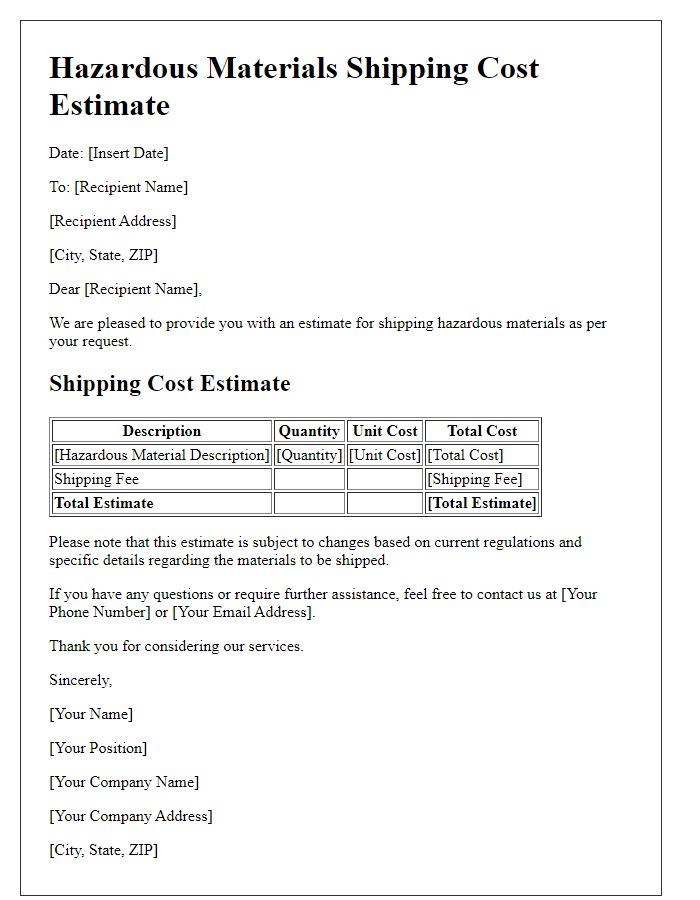Are you ready to navigate the complexities of hazardous materials shipping? Understanding the proper protocols and regulations is crucial for ensuring safety and compliance. In this article, we'll break down essential guidelines and best practices to help you tackle your shipping needs with confidence. So, let's dive in and explore the crucial steps you need to take!

Proper Identification and Classification
Proper identification and classification of hazardous materials during shipping is crucial for ensuring safety and compliance with regulations such as the Hazardous Materials Transportation Act in the United States. Each material must be labeled according to the United Nations (UN) numbers, which consist of four-digit codes that designate specific substances, like UN 1203 for gasoline or UN 1789 for sulfuric acid. Additionally, the correct use of placards, which serve as visual indicators on transport vehicles, is mandated to inform emergency responders about the contents, with specific colors and symbols signifying different hazards. The shipping documents must include detailed information, including the proper shipping name, hazard class, and the packing group of the hazardous materials to facilitate appropriate handling and response in case of incidents. Recognition of Material Safety Data Sheets (MSDS) is also vital, providing necessary information regarding potential hazards, safe handling practices, and emergency procedures associated with the materials being transported.
Regulatory Compliance and Documentation
Shipping hazardous materials, including substances classified under the United Nations (UN) regulations, necessitates rigorous adherence to safety protocols. The Department of Transportation (DOT) mandates specific labeling, including the appropriate UN numbers (four-digit codes designated for hazardous materials) on packaging. Accurate documentation, such as a Shipper's Declaration for Dangerous Goods, is essential, detailing the nature of the materials, including their technical names, packaging group classifications, and quantities. Compliance with the Hazardous Materials Regulations (HMR) ensures not only the transmission of documents like the Safety Data Sheet (SDS), which provides vital information about the handling and risks associated with each material but also the secure transit of items such as flammable liquids, corrosives, or toxic agents. Failure to meet these requirements could lead to legal ramifications and safety hazards during transportation.
Accurate Labeling and Marking
Accurate labeling and marking of hazardous materials for shipping (such as flammable liquids, toxic substances, and corrosive materials) are critical to ensuring safety in transit. The United Nations (UN) system of classification assigns specific UN numbers (e.g., UN 1203 for gasoline) to identify each material. These numbers must be prominently displayed on shipping containers to communicate risks. Labels must adhere to regulations set forth by the Department of Transportation (DOT) and the International Air Transport Association (IATA), which dictate the use of standardized symbols and color coding (such as red for flammable materials). Proper documentation, including the Material Safety Data Sheet (MSDS) and Shipper's Declaration for Dangerous Goods, must accompany each shipment. Compliance with these guidelines enhances safety for carriers, emergency responders, and the environment throughout the shipping process.
Secure Packaging and Containment
Secure packaging and containment of hazardous materials are crucial for ensuring safety during transportation. The United Nations (UN) has established specific guidelines for the packaging of hazardous goods, categorized by the UN number, which identifies the type of material. Each package must withstand certain pressure levels, typically ranging from 0.4 to 0.8 bar, to prevent leaks and spills. Packaging types vary, including drums (typically 55 gallons) and intermediate bulk containers (IBCs) that can hold up to 1,500 liters. All containers must feature appropriate labels indicating hazard classification, including symbols such as skull and crossbones for toxic materials or a flame for flammable substances. Proper documentation, comprising a Shipping Paper and Emergency Response Guide, must accompany each shipment to inform handling personnel of the potential risks involved. Effective training for personnel involved in handling and transportation is also essential to minimize the risk of accidents or improper handling of these dangerous substances.
Emergency Response Information
Transporting hazardous materials requires strict adherence to regulations outlining safety protocols and emergency response procedures. The U.S. Department of Transportation (DOT) mandates detailed emergency response information on shipping papers. First responders must have access to the Emergency Response Guidebook (ERG), which provides crucial guidance for specific materials, including chemical name, UN number (such as UN 1203 for gasoline), and required personal protective equipment (PPE). Accurate identification of hazardous characteristics, such as flammability or toxicity levels, is essential. Immediate contact numbers for poison control centers and local emergency services must be listed clearly. Furthermore, instructions for containment and isolation of hazardous leaks must be provided to mitigate risks to human health and the environment during transportation incidents.















Comments